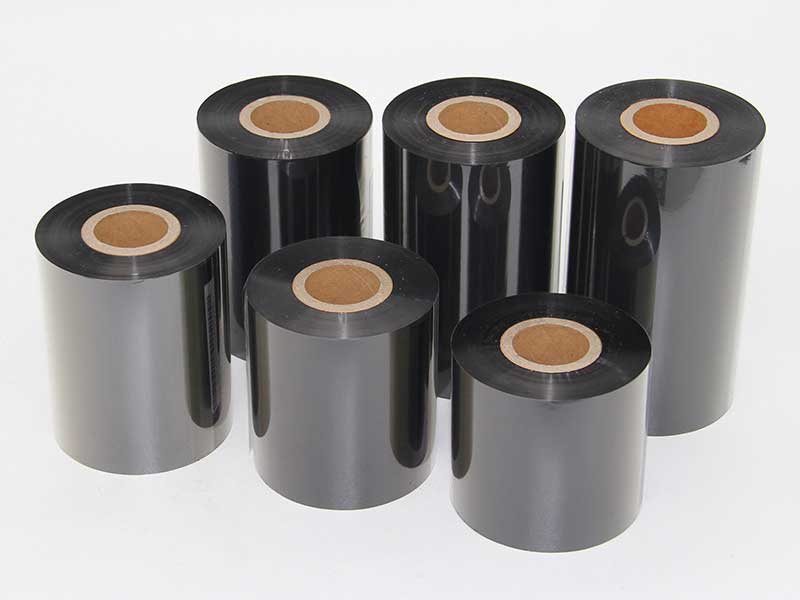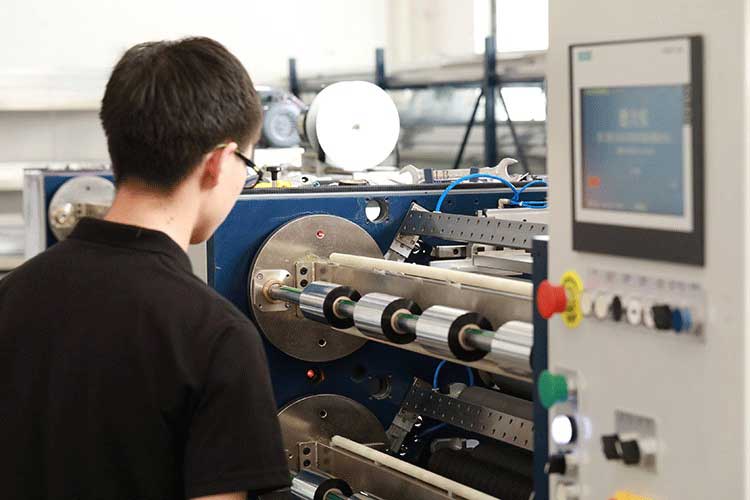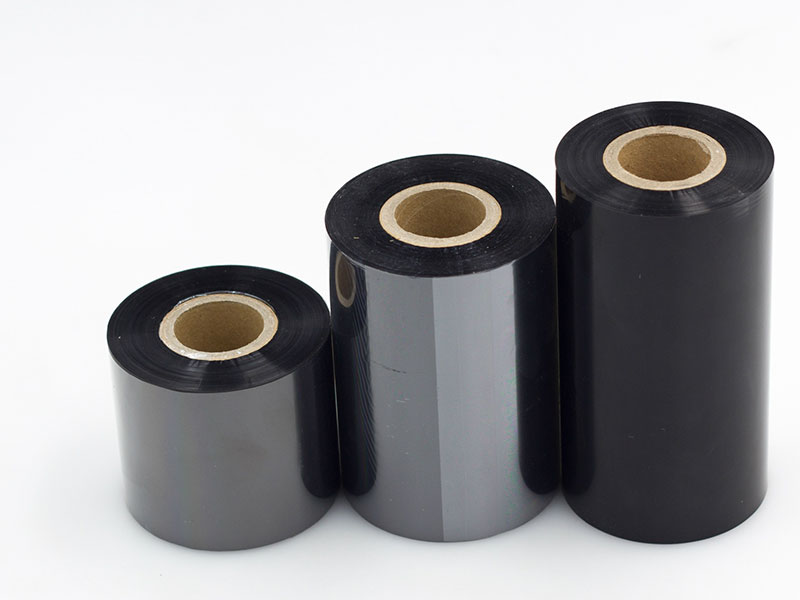The core advantages and mechanism of the ribbon slitting machine can significantly improve production efficiency and reduce waste by accurately slitting ribbons (thermal transfer printing materials):
1. Precise slitting reduces material waste
• High-precision cutting: CNC or laser technology is used to ensure that the slitting width error is controlled within ±0.1mm, avoiding waste caused by traditional manual cutting deviations.
• Adapt to diverse needs: It can be slitted in different widths (such as 10mm, 30mm, etc.) according to customer needs, maximizing the use of ribbon coils and reducing scrap material waste (usually reducing the scrap rate by 15%-30%).

2. Automated operation to improve production efficiency
• High-Speed Slitting: Modern slitting machines can reach speeds of up to 20-50 m/min, which is 5-10 times faster than manual operations, especially suitable for high-volume orders.
• Continuous operation: Automatic unwinding, slitting, and winding integrated design to reduce downtime and material change, and improve equipment utilization.
• Intelligent control system: Some models are equipped with PLC or visual inspection, automatic deviation correction and tension control to ensure the stability of the slitting process and reduce the defective rate.
3. Reduce comprehensive costs
• Labor saving: One slitting machine can replace 3-5 workers, reducing labor costs in the long run.
• Reduce inventory pressure: Cut different specifications on demand to avoid inventory overstock caused by pre-slitting.
• Extended ribbon life: Precise slitting reduces ribbon edge damage, avoids breakage during printing, and improves yield.

4. Flexible adaptation to industry needs
• Multi-scenario applications: suitable for slitting needs in different fields such as barcode labels, clothing tags, and electronic product identification.
• Strong compatibility: It can handle a variety of ribbon materials such as PET, wax-based, and hybrid-based, adapting to different printing equipment requirements.
5. Environmental protection and sustainability
• Waste recycling: Slitted leftovers can be centrally recycled (such as some manufacturers provide recycling services), further reducing the environmental burden.
• Energy Consumption Optimization: The new slitting machine adopts energy-saving motors, which reduce energy consumption by 20%-40% compared to traditional equipment.

Actual case reference
After a label manufacturer introduced a ribbon slitting machine:
• Increased production efficiency by 200%, increasing the average daily output from 500 to 1,500 rolls;
• The scrap rate has been reduced from 8% to 3%, saving more than 120,000 yuan in ribbon costs per year.
• Lead times were reduced by 60% and customer satisfaction was significantly improved.
Select a suggestion
• High-demand enterprises: Choose automatic slitting machines, equipped with inspection systems, suitable for 24-hour continuous production.
• Small and Medium-sized Enterprises: Semi-automatic models are cost-effective, balancing precision with budget.
• Key parameters: pay attention to slitting accuracy, maximum unwinding diameter (such as 600mm), tension control method, etc.
Through the precision and automation of ribbon slitting machines, enterprises can optimize the entire process from materials to finished products, directly improving profit margins and market response speed.

Remember, the cost of preventive maintenance is much lower than the losses caused by unplanned downtime.
18. December, 2025
The one-click operation of the ribbon slitting machine represents not only the simplification of the operation method, but also the epitome of the transformation of industrial manufacturing to intelli
18. December, 2025
This is not only an upgrade of technology, but also a paradigm shift in design philosophy from "machine-oriented" to "human-centered care".
18. December, 2025
not just a tool for production, but a gatekeeper of quality, signing an unspoken guarantee of quality with its reliability.
12. December, 2025
Its evolutionary trajectory clearly points to two dimensions: rock-solid reliability and smooth flow of water
12. December, 2025